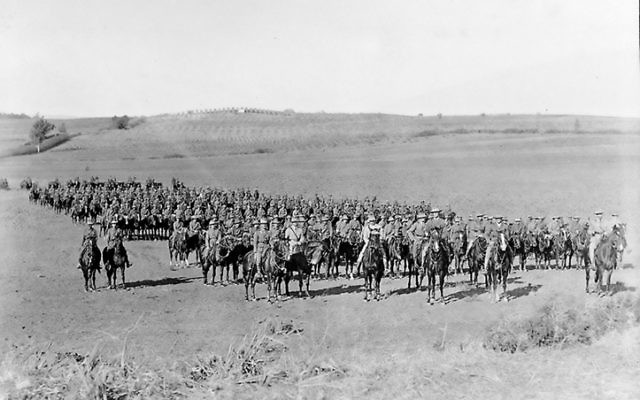WWI’s last Mid East milestone
AUSTRALIANS are travelling to Israel to join in commemorations of the last great battle of the World War I Middle East campaign, which eventually led to the founding of Israel.
AUSTRALIAN Christian Zionists are travelling to Israel to join in commemorations of the last great battle of the World War I Middle East campaign, which changed the course of history and eventually led to the founding of Israel.
Some 100 Australian Christian Zionists will visit Israel for the centenary of the battles of Megiddo and Semakh, including Jill Curry, who leads the Jewish Prayer Focus Ministry.
They will take part in a September 25 commemoration at the site of Semakh (now Tzemach), a Galilee village captured by the Australian Light Horse. The ceremony will be addressed by Jordan Valley Regional Council Mayor Idan Greenbaum and by the Zionist Federation of Australia’s Israel director Yigal Sela.
After the liberation of Beersheba and Jerusalem from the Ottoman Turks in October 1917, a summer of stalemate in 1918 led General Edmund Allenby, Britain’s Middle East commander, to plan a break of the Turkish line north of Jaffa and east to the Jordan River and beyond, with Australian General Sir Harry Chauvel and his Desert Mounted Corps his key weapon.
Mobilising thousands of troops, cavalries comprising the Australian Light Horse among fighters from various Empire countries moved north from Jaffa, and east across the Megiddo Pass to the Jezreel Valley and Jenin. Amman, today the capital of Jordan, was captured and, on October 1, Damascus fell to the Allies.
In six weeks, from September 19 to October 31, 1918, the Australian Light Horse was part of an army that captured 360 guns and 75,000 prisoners and moved the front forward 560 kilometres.
Curry noted the role played by Indigenous Australian fighters, using their experience as stockmen on outback mission stations. Despite restrictions on enlistment of non-whites, more than 1000 Indigenous men served in World War I. With troops diverted to the European theatre, enlistment rules for the Middle East campaign were relaxed towards the end of the war.
“One group of reinforcements sent from Australia had so many Indigenous members it became known as the Queensland Black Watch,” she said.
That group played a key role with the Light Horse in capturing Semakh. To honour their forebears, descendants of the Queensland Black Watch fighters are now forming a friends group as part of the Australian Light Horse Association.
“People have heard of [the Battle of] Beersheba,” Curry told The AJN, “but this final breakthrough was, in my opinion, just as dramatic and just as big”.
PETER KOHN


comments